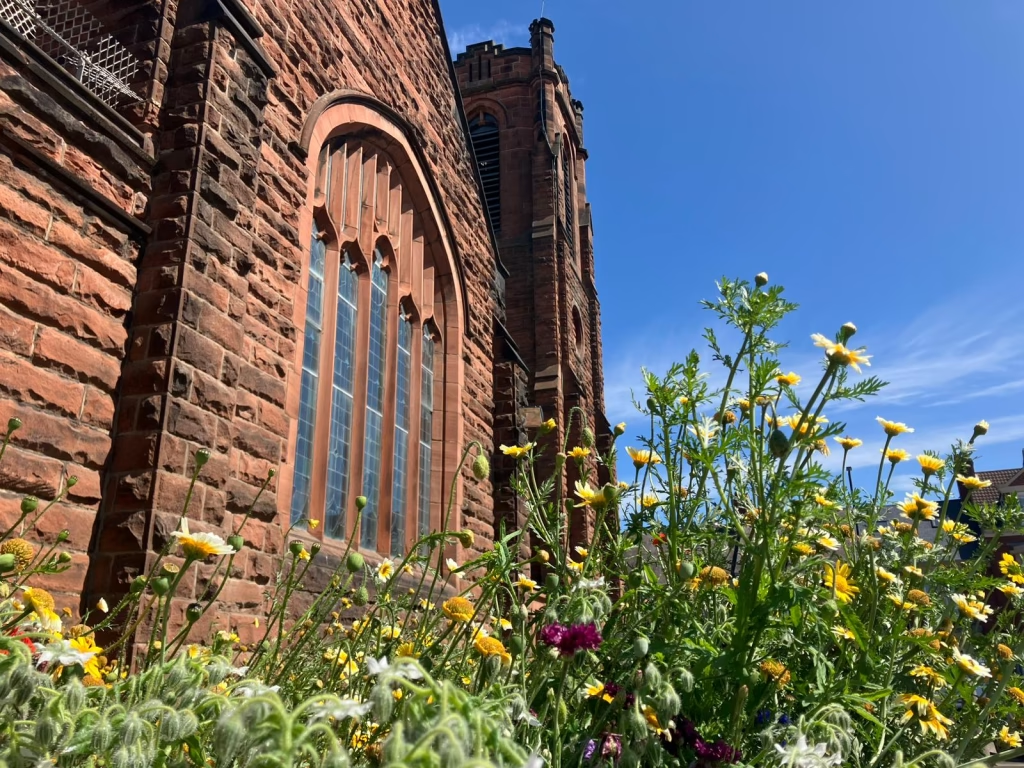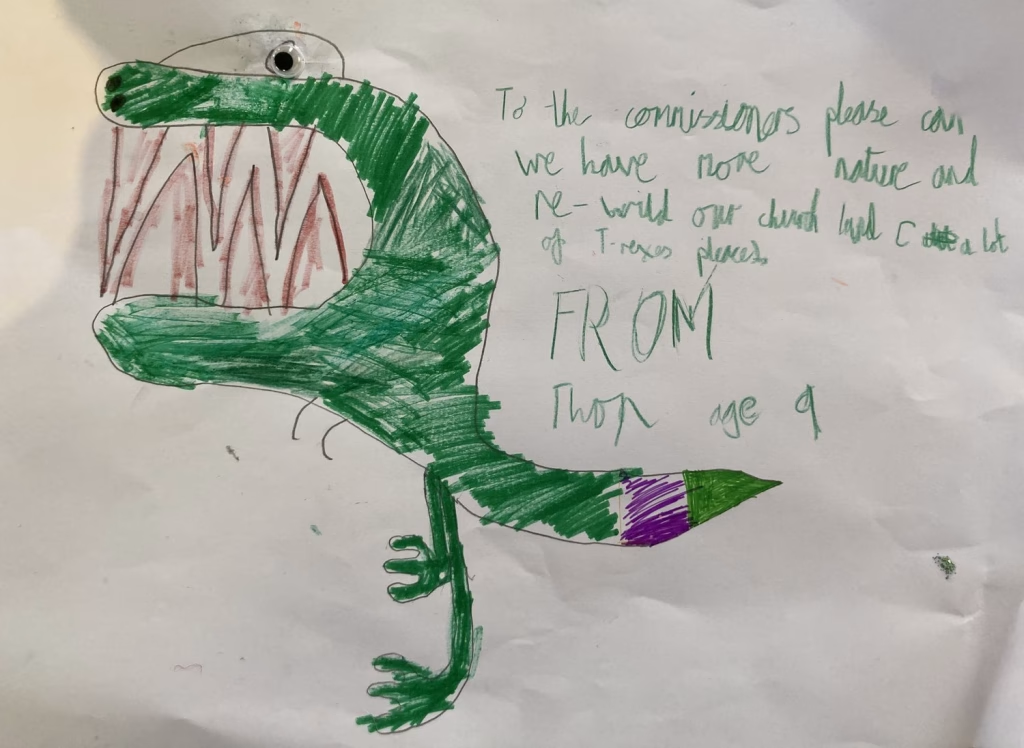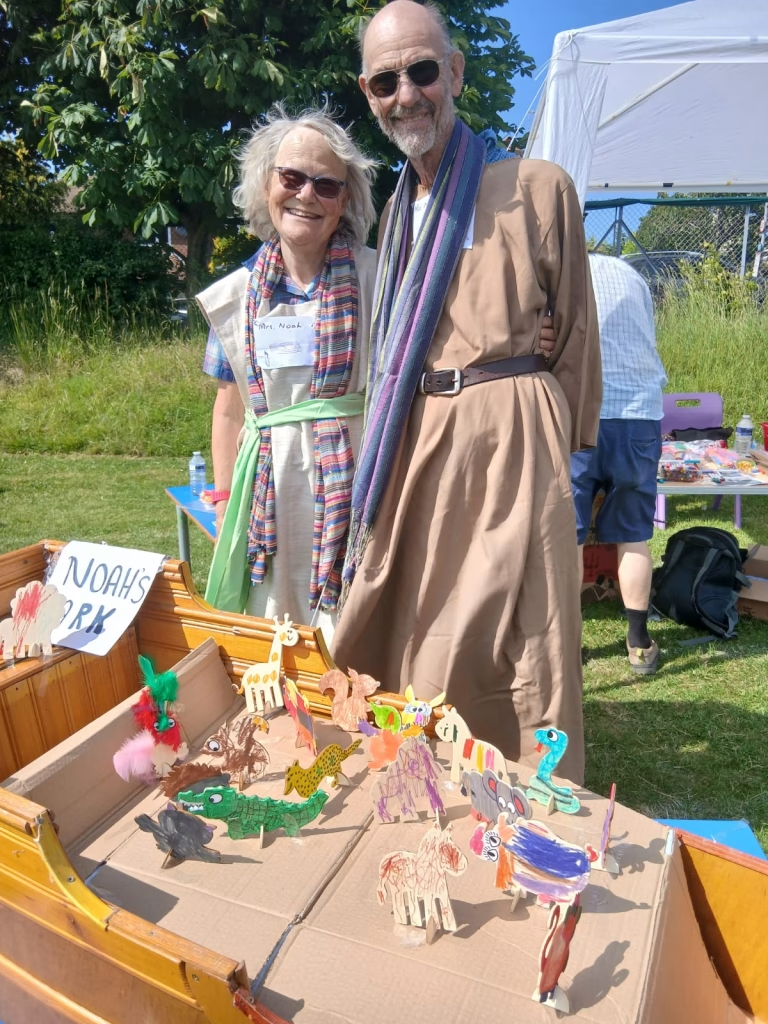Church communities rewilding together

Across the country, church goers and church communities within the Church of England are taking action to restore the health and flourishing of biodiversity within their local areas, driven by the passion within their congregations for creation care. At a time when the ecological and climate crises can weigh heavy on us, it’s so uplifting to hear stories of folks coming together to tackle these issues, often building community, reconnecting with nature and nurturing hope while they’re at it. Inspired by the stories that we’ve come across, we’ve pulled together some of the ways church communities are taking action to support the restoration and rewilding of land within their local parishes.
Biodiversity surveys and monitoring
When it comes to restoring biodiversity, it’s helpful to get a picture of what species already call your patch home, and track the return of more species as action is taken to support their flourishing. Churches Count on Nature is an initiative organised in collaboration between the Church of England, Caring for God’s Acre and A Rocha to support local churches to do just this! Last year, as part of the event the eco team at Ely Cathedral teamed up with Ely Wildlife Watch to run an all-ages Discovery Morning on bugs and bees, which included counting, crafting and hearing from experts on our impact on local wildlife. Berwick Parish Church have participated in the Count every year since 2022, and in the process have seen an increase in species diversity as a result of their work to make space in their churchyard for wilding.
Outside of Churches Count on Nature week, St Mary’s Church in Pulborough hosts regular Bat and Moth Evenings, where community members come together monthly over the summer to observe and count the roost of Soprano Pipistrelles and Serotine bats in residence, as well as the range of moths that emerge through the season. This was initiated by some curious and passionate church members who sought insight from experts about these creatures that share the night sky and wanted to share the magic of seeing them take flight.
On a practical level, All Saints Church in Ecclesall has used biodiversity surveys to inform decisions on enhancing wildlife within their churchyard. Having this information has led to changes in management practices, including minimising intervention in their woodland area and adjusting their meadow cutting regimes to allow seasonal wildflowers to grow.
Rewilding church yards and burial grounds
Local parishes don’t always have a lot of land directly available to them to rewild themselves, but there are many that are finding creative ways to protect and support biodiversity on the patch that they have. One example is Christ Church Dore in Sheffield, who have been rewilding their churchyard with the help of Dore Scouts and Dore Primary School. By giving the churchyard space to grow without strict interventions, wildflowers have bloomed and wildlife has flourished, including visits from Red Admiral butterflies!
St Mary’s Church in East Grinstead has only a small patch of land around a large oak tree in their churchyard. Yet, even with this limited space, church members organised a joint project with a local school to plant shrubs, perennials and wildflowers and install bird feeders, nest boxes and bug hotels to enhance the habitat provided by the oak tree already appreciated by local wildlife. Another St Mary’s, this one Ewell, have also created a wildlife refuge with a small patch available to them on the outskirts of their graveyard, turning it into a wildflower meadow with the involvement of Ewell Castle School and the Surrey Wildlife Trust.
Partnering with others across regions
Almost all the stories we find of church members and groups taking action for biodiversity involve the bringing together of others in the local community to contribute in creating space for nature. Trinity Church in Lewes is one great example of this, where the Trinity Creation Care team have worked alongside Lewes Climate Hub on a local ‘Rewilding and Renaturing’ campaign which aims to give 30% of cultivated land back to nature by 2030 – just what we’re asking of the Church Commissioners! Trinity gave a webinar on ‘Wildlife Gardening’ to launch the campaign, which led to other local churches reaching out for advice on supporting wildlife in their own churchyards.
St John’s in Harleston has also formed partnerships within the community to contribute to region-wide action for biodiversity. They are a part of Nature Recovery Harleston, where the church, town council, schools and other local groups are working together on various projects that support local wildlife and contribute to the protection of nature. The group was launched at St John’s under a canopy of hundreds of paper butterflies made by local students, and since then action has been taken to support swifts, grow wildflower meadows, and create more wildlife-friendly habitats.
This kind of work also has the potential to connect people across communities and regions. St Ethelburga’s in Bishopsgate is doing just that through their Lifeline’s project, which connects folks from different faiths and community groups with farmers to help with the planting of biodiversity-rich and wildlife-supporting hedgerows. Through the programme, participants get to learn practical skills and have the satisfaction of getting their hands dirty planting trees, and farmers get help to create more space for wildlife and enhance biodiversity on their land. It truly is a win for communities, farmers and nature!
Taking part in the Rewild the Church movement
Lastly, another way church members have contributed to addressing the biodiversity crisis is by taking part in the Rewild the Church movement! Church goers have shown their support by joining hundreds of others at St Paul’s to ask the Church Commissioners to commit to 30×30, as well as signing the petition, and sending crafts to their door. Others have come together in their communities to take action in support of the campaign, such as All Hallows Church in Leeds who dedicated a Sunday worship to craftivism, sending these with messages to the Church Commissioners asking them to rewild some of their land. Mary and Ian from Trinity Church in Lewes hosted a Noah’s Ark stall at a local school fair, where participants had the opportunity to learn more about the campaign while crafting animals seeking refuge from crisis.
This final example is a poignant reminder that so many creatures and critters are indeed crying out for refuge from the biodiversity and climate crises we are facing. We know that in order to address the biodiversity crisis at the scale necessary, we need the Church Commissioners as large landowners to follow the lead of all the churches across the country doing their part in stewarding creation. Imagine how much their impact could be amplified if the Church Commissioners committed to dedicating 30% of their 108,000 acres of land to the restoration and protection of nature?
P.S. Since writing this blog, we’ve found an incredible digital booklet from Operation Noah that compiles even more stories and photos of inspiring projects on church land. Do check out their ‘Growing Hope’ booklet here.


Our blog posts are written by our core team and guest bloggers. If you have an idea for a blog post please pitch it to us: info@wildcard.land
CAMPAIGNS
ARCHIVES
- December 2025
- November 2025
- October 2025
- September 2025
- August 2025
- July 2025
- June 2025
- May 2025
- April 2025
- March 2025
- February 2025
- December 2024
- November 2024
- October 2024
- September 2024
- August 2024
- July 2024
- June 2024
- March 2024
- February 2024
- January 2024
- December 2023
- November 2023
- August 2023
- July 2023
- May 2023
- February 2023
- January 2023
